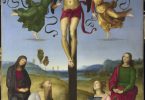Matisse: In Search of True Painting

Is it possible that painting “did not come easily” to the renowned early 20th century artist Henri Matisse? How can this be, when according to critic Clement Greenberg (The Nation, 1949), Matisse was a “self-assured master who can no more help painting well than breathing”? With its distilled collection of pairs, trios, and series, The Metropolitan Museum of Art’s current exhibit, Matisse: In Search of True Painting, focuses on how “he questioned, repainted, and reevaluated his work” throughout his career. In his words, this process was aimed to “push further and deeper into true painting.” Matisse repeated subjects and copied compositions from early on. Beginning in the 1930s, he additionally had his work photographed at critical stages to document progress and to determine “whether he had advanced or regressed.”
The exhibition consists of 49 paintings, including “Young Sailor I” and “Young Sailor II,” both created in 1906. The first is of a seated teenager, painted in muted, but warm greens, blues, and grays, with brush strokes and shadows evident. The second portrays the same young man, similarly positioned, but simply outlined on a vivid pink background. His shirt is distinctly blue, his pants a bright green. The image’s sharp definition makes it appear that Matisse tried to color within the lines. The overall effect is flat. The artist initially denied making the second painting, claiming that it had been created by a local letter carrier. After a time, he admitted that his intent in “Young Sailor II” was to “condense the meaning of [a] body by seeking its essential lines.”

Nearly forty years later, in December 1945, six of Matisse’s works were installed as the inaugural exhibition at the Galerie Maeght in Paris. Each painting was accompanied by a series of sizeable photographs chronicling its history. Through this public display, Matisse hoped to prove that his “paintings were the result of a complex process,” and thereby counter critics who suggested that his art was crafted spontaneously without thought or effort. The Met’s current exhibition includes one of these paintings, “The Dream”—which absorbed him for nearly a year—as well as a nearly unrecognizable preliminary sketch.







